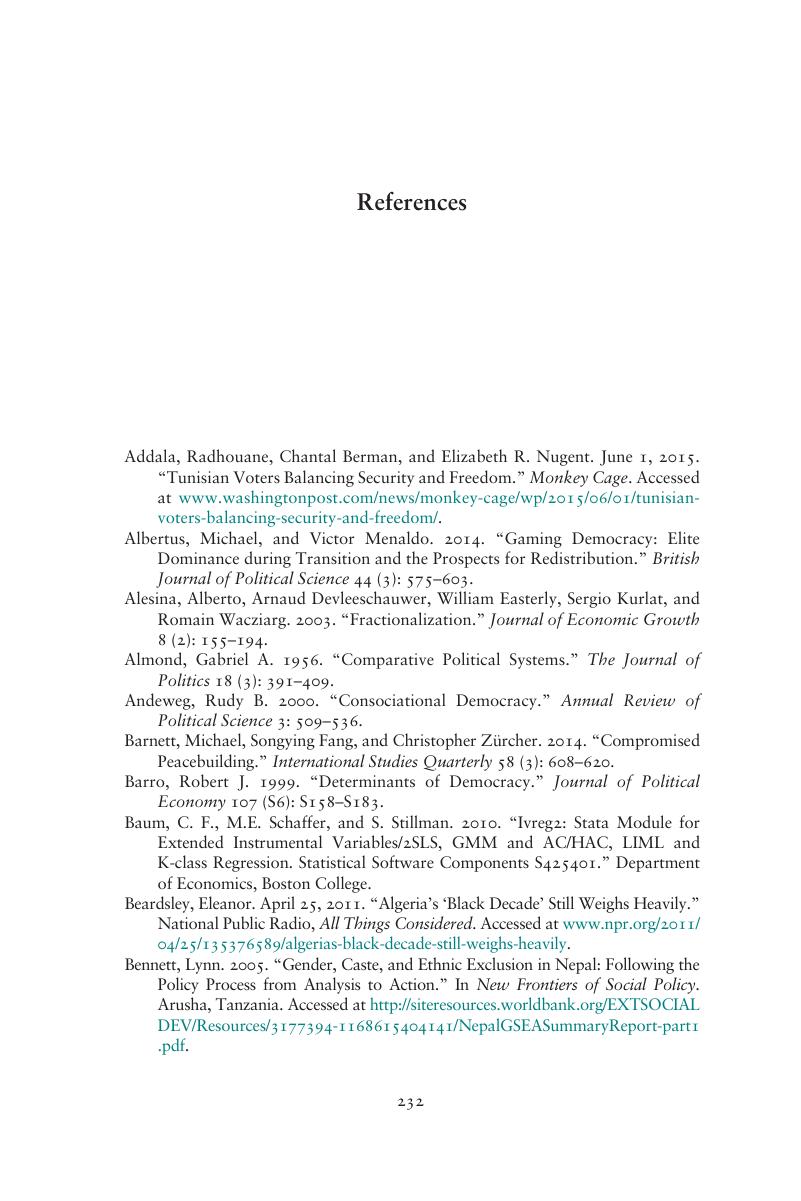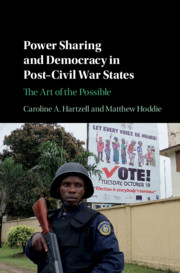Book contents
- Power Sharing and Democracy in Post–Civil War States
- Power Sharing and Democracy in Post–Civil War States
- Copyright page
- Dedication
- Contents
- Figures
- Tables
- Acknowledgments
- Part I From Civil War to Democracy – Introduction and Theory
- Part II Evidence
- Part III Conclusion
- Appendix
- References
- Index
- References
References
Published online by Cambridge University Press: 01 June 2020
- Power Sharing and Democracy in Post–Civil War States
- Power Sharing and Democracy in Post–Civil War States
- Copyright page
- Dedication
- Contents
- Figures
- Tables
- Acknowledgments
- Part I From Civil War to Democracy – Introduction and Theory
- Part II Evidence
- Part III Conclusion
- Appendix
- References
- Index
- References
Summary

- Type
- Chapter
- Information
- Power Sharing and Democracy in Post-Civil War StatesThe Art of the Possible, pp. 232 - 251Publisher: Cambridge University PressPrint publication year: 2020



